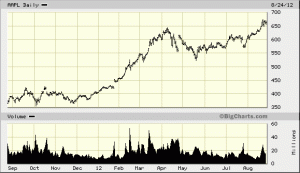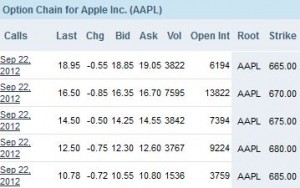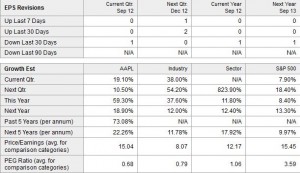Have you ever heard of the rule of 72? 72 divided by the annualized return that you are able to get on your money and you have the amount of time required for your money to double. Let me give an example. If you were able to receive an annualized return of 36%, 72/36 equals 2.0. Therefore, if you were able to get a 36% annualized return on your money, your money would double every two years. Nice!
I know that 5/4 people aren’t good at math, but hear me out.
I was at a Cracker Barrel in Gainesville, TX. The cashier was having a hard time making change because the register was broken. I told him, “Don’t feel bad because 5/4 people aren’t good at math”. He said, “I believe it”. I said, “I don’t know, maybe it’s higher than that”. But I digress.
You’re next question might be, how can I ever get a 26-36% return on my investment? The 10 year treasure rate is 1.68% Well, funny that you should ask. I am going to show you how I’ve been trading covered calls on AAPL stock and we’ll do the math on them.
Here’s a stock chart of AAPL on 8/24/2012. The closing price on Friday was $663. Here is the option chain for AAPL options.
Let’s start by defining what an option is. Here’s an example. Let’s say your house is worth 100K. I pay you $5,000 today for an option to buy your house anytime within the next 5 years for $125,000. Theoretically, I would never exercise that option unless your home became worth at least $130,000.
On stock options, I prefer to sell OTM (out of the money) options expiring within the next 30 days. Why is that my preference? I think it’s human nature not to admit when you are wrong. People hang on to positions hoping that things will change. People probably bought these options 6-12 months ago and are hanging onto them, refusing to admit mistake. I’ll sell them for the last 30 days, because that’s when then most cost erosion takes place. In poker, I make money off of gamblers. In stock trading, I prefer to do the same.
As you can see, the Sept. 22 call options pay $12.50/contract. A contract is for 100 shares. Therefore, if I sold 1 contract, I would receive $1250. If the stock hits $680 by Sept. 22, I would make an extra $17/share or $1700 for those same 100 shares. Now, let’s do the math. $1250(option income)/$66300 (cost to buy 100 shares of AAPL)=.01885 If I multiply that by 12 to annualize it, it comes to 22.62%. I did it about a week ago, and the figure was 26%. If it hits 680 by Sept 22, here are the numbers, $1250 (option income)+$1700 (appreciation made from 663 to 680)/$66300 (cost to buy 100 shares of AAPL)=.04449. When I multiply this number by 12 in order to annualize it, it becomes 53% annualized.
The most common questions that I get is, “What could go wrong?”. Well, AAPL could go down and your covered call next month will be smaller than the 680. Let’s say it goes to 650, then your covered call option might be around 665. However, if you sell the covered call option every month, your cost basis of the stock is gradually reduced. How many years would it take before my cost basis on AAPL stock was 0? Well, using the 12.00 call option premium, 663/12=55.25. Therefore, in 4 years and 7 months, my cost basis for AAPL would be 0.
My favorite stock ratio is the Price to Earnings Growth ratio. Basically, if the growth rate is higher than the Price/Earnings, then the stock is a bargain. Anything below 1.0 is good. Apple’s is .68. You might counter and say that you don’t trust the earnings estimates of the analysts. Maybe, you are right, but there’s lots of good stuff coming down the pike. For example, iPhone 5, iTV, iPad mini, China growth, and the 1 Billion just announced from the Samsung court case. AAPL missed it’s last earnings, but they also missed before the iPhone 4S came out, because people were waiting to upgrade. I think people are doing the same thing and waiting for the iPhone 5 to come out before upgrading.
How do you get out of the rat race? Lily Tomlin once said, “The problem with the rat race is that even if you win, you’re still a rat.” The only way out of the rat race is to have your passive income exceed your monthly expenses. Ever heard of the board game Cash Flow? It’s a great way to teach your spouse or teenager this concept. In the board game, everybody draws for an occupation. You have the chance to make investments along the way. In the beginning, you live “paycheck to paycheck”. You win the game by getting out of the rat race and having your passive income exceed your monthly expenses. Buying trinkets tends to set your back.
In poker, I try and get my chips in the middle when I’m ahead. I think the odds are in my favor. What do you think?






 Facebook
Facebook Twitter
Twitter Youtube
Youtube GooglePlus
GooglePlus LinkedIn
LinkedIn